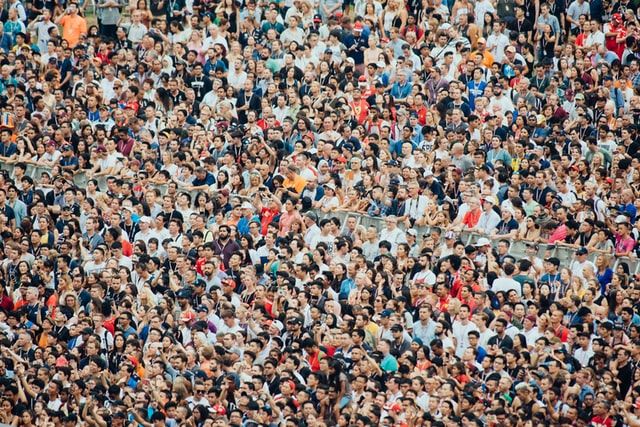Overpopulation feeds traveling viruses like the globe-trotting novel coronavirus we are grappling with. Back in 2009, the swine flu pandemic infected millions and killed thousands of people before coming to a halt a year later. The culprit behind it was a new strain of H1N1. Ironically, H1N1 is the virus responsible for the destructive 1918 Spanish flu, which killed 30-50 million people. American war agencies report, this number is greater than all the deaths put together during the First World War!
The fact that a new strain of H1N1 returned 90 years later – despite all the progress in medicine and disease control – depicts how unbeatable viruses can really be. On World Population Day 2020, consider the deadly mix to understand how overpopulation feeds traveling viruses.
The United Nations estimates that there will be 9.6 billion people in the world by 2050. How we as a race interact with animals and the ecosystem will predict our ability to prevent and control epidemics. A 2008 study published in the scientific journal ‘Nature’ finds a strong correlation between population density and the risk of a pandemic. Infectious diseases are emerging with more frequency and resilience from this mix.
If you take a look at the outbreaks in the last 50-60 years, there’s an alarming trend. The study found that since the year 1940, more than 300 new infectious diseases have surfaced seemingly out of thin air. The pathogens causing these diseases are new to human beings. While some of the pathogens like the West Nile virus, SARS and HIV (believed to have originated in chimps), have jumped from animals to people, others were caused by new strains that became drug-resistant over time, such as tuberculosis and malaria.
How overpopulation feeds traveling viruses
We live in the age of fast travel. It would take our predecessors a road trip or sea voyage spanning months–or years–to travel to another continent. Today, it’s a matter of a few hours’ flight by air. This is great not just for us humans but also for traveling viruses and microbes. Infected travelers carry pathogens with them wherever they go, passing them on to healthy people as they traverse by air and road. Before they know it, a whole bunch of healthy people have suddenly fallen sick and they don’t know why. With the population estimated to touch 11 million by the end of this century, there will be many more travellers, unknowingly spreading contagion.
Long before COVID-19, the SARS epidemic in 2002 depicted what a traveling virus could do. SARS spread from China to the rest of the world within a few weeks. It killed 800 people before being brought under control. However, it brought damages of billions of dollars, affected several industries and cut international travel by more than half before it went down. Cut to 2020, COVID-19 has upended the global economy. World trade is expected to fall by 13%-32% according to World Bank estimates.
Densely populated cities breed pathogens
Another consideration on World Population Day 2020 is the movement from laidback villages to densely populated cities. People in crowded cities are more vulnerable to infectious disease. Natural disasters such as Cyclone Amphan and Odisha floods exacerbate the spread.


